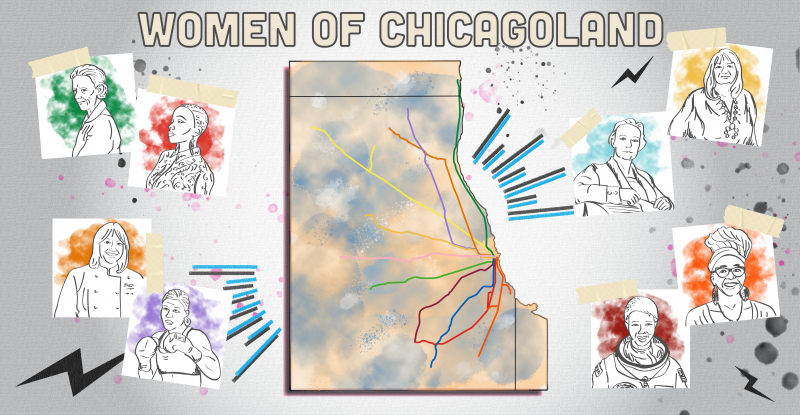
The Chicagoland region is home to extraordinary women of all talents, walks of life and accomplishments. Their influence may be local or far-reaching, their names well-known or not, but their significance to the Chicago region is undeniable. In honor of International Women’s Day, we chose to honorarily rename our rail lines after some of the influential women who were born, lived or did most of their work near our routes.
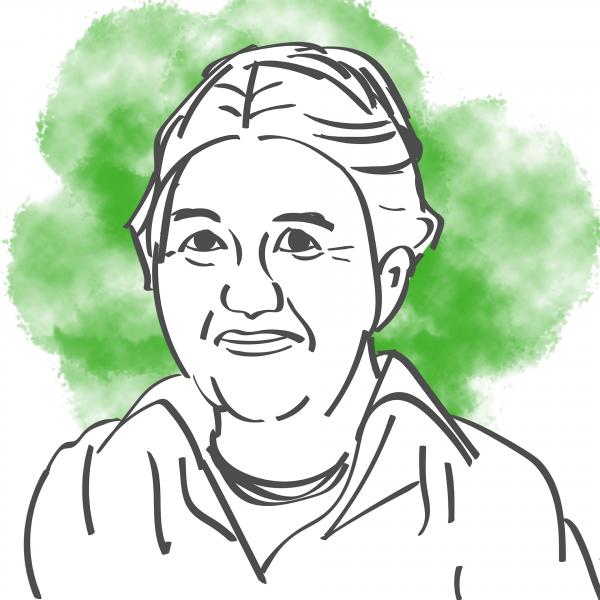 May Theilgaard Watts Line – BNSF
May Theilgaard Watts Line – BNSF
May Theilgaard Watts a naturalist at the Morton Arboretum, educator, artist and writer, was born in Chicago on May 1, 1893. Watts developed a fascination with natural studies and botany, inspired by the experiences of her father who was a trained landscape gardener and by the work of Henry C. Cowles, the famous botanist and ecologist. Watts attained a bachelor of science degree in botany and ecology from the University of Chicago and became involved with preservation groups and garden clubs after moving with her husband and family to Ravinia. In 1942, Watts joined the Morton Arboretum as a staff naturalist and helped develop popular programs for the Arboretum in botany, gardening, geology, sketching, and creative writing. Her books, including her more popular Reading the Landscape of America, helped bring “ecology” into the vernacular for countless readers and natural preservation into the fabric of Chicagoland’s communities. After her retirement, she continued her fight for nature preservation and public greenways, including her efforts to convert abandoned Chicago, Aurora and Elgin Electric (CA&E) tracks into what is now the Illinois Prairie Path.
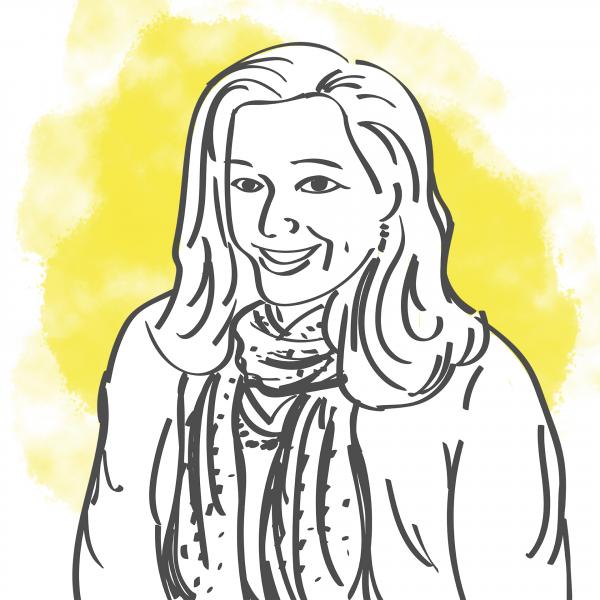 Susan Patel Line – Union Pacific Northwest
Susan Patel Line – Union Pacific Northwest
Susan Patel may best be known as an heiress to the Patel Brothers chain, the largest Indian grocery store franchise in America. The original small business was started as a means of curing homesickness for Patel’s father and uncle and fellow Indian immigrants in their community. However, Patel’s main driving force is encouraging the next generation to discover and embrace their own versions of their culture as South Asian Americans. Patel grew up in Skokie and went to high school in Niles. After a short period of teaching math and science at a charter school, Patel became the Assistant Director at the Indo-American Center (IAC), an organization dedicated to helping South Asian immigrants adjust to their new life in America and develop friendships and community with the wider society. Patel also is the board president the Indo-American Democratic Organization, a political advocacy group that encourages South Asian participation in the political process and elevates the voices of immigrant communities. Patel continues to find new ways to uplift the culture and self-exploration the next generation of South Asian Americans through her political action and community involvement.
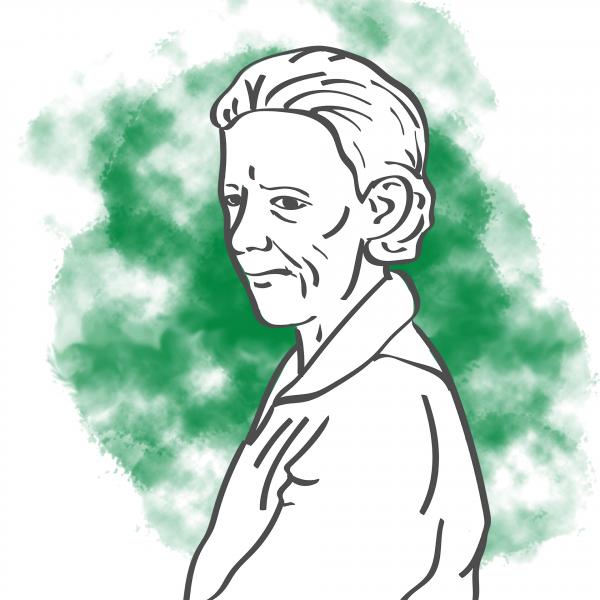 Marion Mahony Griffin Line – Union Pacific North
Marion Mahony Griffin Line – Union Pacific North
Without Marion Mahony Griffin there would be no Frank Lloyd Wright, and yet the accolades for this pioneering woman is shadowed by that of her former colleague. Mahony Griffin was born in Chicago in February 1871 but her family was pushed north to Winnetka after the Great Chicago Fire in October of that year. The rural landscape of Winnetka in that time, of natural lakefront, prairie and oaks, no doubt made an impression on her professional career as she balanced nature and urbanity in her architectural works, an aesthetic made famous by the Prairie School style of architecture. In 1894, Mahony Griffin became the second woman to graduate from MIT, receiving a degree in architecture. Mahony Griffin was the first woman in the United States, and one of the first in the world, to obtain a license to practice architecture. She started her career as a drafter in Chicago’s Steinway Hall, where she met Frank Lloyd Wright. Wright hired her soon after, and the two worked together for 15 years. During this time, Mahony Griffin created the Japanese-influenced architectural drawings that helped bolster Wright’s international reputation and revolutionized the way architecture is presented. With Mahony Griffin’s help, her husband, Walter Burley Griffin, won the bid to design the Australian capital city Canberra, a success accredited to her drawings. After her husband’s sudden death from illness, Griffin returned to Rogers Park to live with her sister and family.
 Maryann Krieglstein Line – Union Pacific West
Maryann Krieglstein Line – Union Pacific West
Maryann Krieglstein has dedicated her life to serving sexual assault victims and researching domestic violence and heterosexism. Krieglstein’s academic career spanned several positions in the College of DuPage and Aurora University, the former of which granted her a Professor Emeritus position after her retirement in 2013. Her work has been published in the American Journal of Community Psychology and the Journal of Human Behavior in the Social Environment. Outside of the classroom, Krielglstein worked as a coordinator of sexual assault services for the YWCA of DuPage County and organized the Child Abuse/Sexual Assault Awareness Fair, Domestic Violence Awareness Fair and Take Back the Night events. She has also worked with the Hamdard Center and the American Indian Center in Chicago to elevate the voices of South Asian and Native American communities in the area. Kreiglstein took on leadership roles for Youth Outlook, an LGBT advocacy organization, and Family Shelter Services.
 Nnedi Okorafor Line – Metra Electric, Main Line
Nnedi Okorafor Line – Metra Electric, Main Line
Nnedi Okorafor is a science fiction and fantasy writer who has transformed the way the genre is written by weaving Nigerian deities, legends and spirits into her stories. Okorafor grew up in Flossmoor, the daughter of Nigerian immigrants. Fascinated by insects growing up, Okorafor had planned to be an entomologist; however, she started writing stories to keep herself busy while in recovery after scoliosis surgery and she discovered her passion. Okorafor tackles social inequalities, political violence, the degradation of the environment, genocide and corruption along with the folklore of her family’s native country in her works. Her book Who Fears Death is in development as an HBO series, and she has won the Wole Soyinka Prize for Literature in Africa for her debut novel Zahrah the Windseeker, among many other accolades. Currently, she is writing a three-issue comic book for Marvel’s Black Panther series.
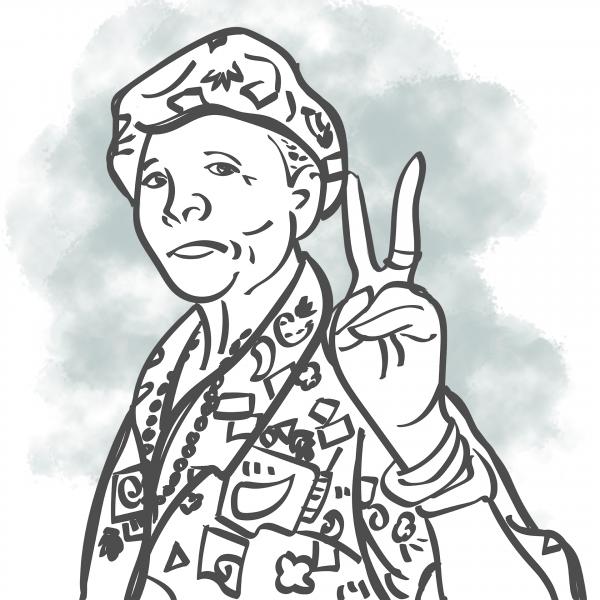 Margaret Taylor-Burroughs Line – Metra Electric Line, South Shore Branch
Margaret Taylor-Burroughs Line – Metra Electric Line, South Shore Branch
Margaret Taylor-Burroughs was many things. She was a poet, a community leader, an artist and an inspiration for countless people both in Chicago and across the country. Born in Louisiana, Taylor-Burroughs and her family moved to the south side of Chicago when she was young. She worked as a teacher at DuSable High School for 20 years and became a children’s book writer, poet and artist in that time. After her teaching career, Taylor-Burroughs focused on elevating her community and became one of the founders of the South Side Community Art Center, a place that serves as a gallery and workshop for artists and students in the South Side. She also helped found the DuSable Museum of African American History in Washington Park, a museum affiliated with the Smithsonian. Though she worked with several art mediums, she is most noted as a linoleum block printmaker of African leaders, history and ordinary life, and her work can be found in many museum collections. In her lifetime, Taylor-Burroughs received the President’s Humanitarian Award from Gerald Ford, a Paul Robeson Citation Award, and a Legends and Legacy Award. President Jimmy Carter appointed her a member of the National Commission on African-American History and Culture, and Harold Washington honored Taylor-Burroughs by naming February 1, 1986, “Dr. Margaret Burroughs Day.” Her lifetime of work for her community and her art landed her in the Chicago Women’s Hall of Fame in 1989. Taylor-Burroughs died in 2010.
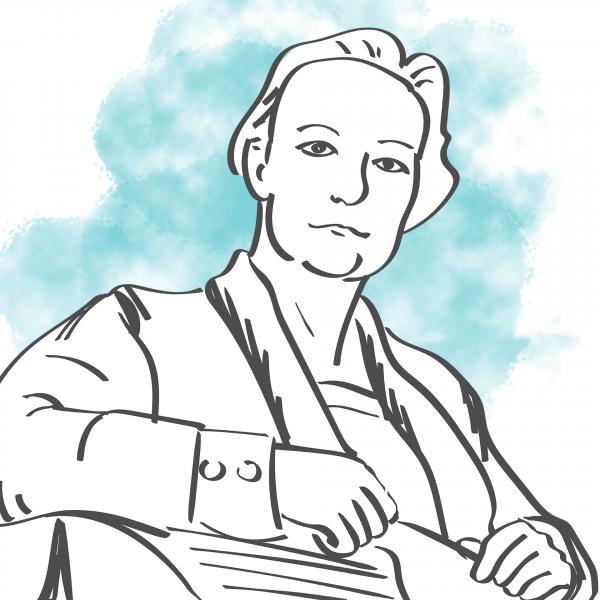 Helen L Koch Line – Metra Electric, Blue Island Branch
Helen L Koch Line – Metra Electric, Blue Island Branch
Helen Koch was a developmental psychologist most noted for her research in the differences between sets of fraternal twins, identical twins and non-twin siblings. Her work was credited with the improved accuracy of investigations into sibling order. Born in Blue Island, Koch went on to become a faculty member at the University of Texas and the University of Chicago. She was a co-winner of the first G. Stanley Hall Award for Distinguished Contribution to Developmental Psychology and helped found Delta Kappa Gamma, a professional society for women educators. Her research defined several variables that had to be held constant in order to minimize errors in analyzing sibling order. She discovered in a large study of five- and six-year-olds that identical twins were similar to fraternal and non-twin siblings in almost all of the measured variables, which rendered the previous assumption that fraternal and identical twins were interchangeable for the purposes of twin development studies unreliable. Koch’s research also called into question the nature-versus-nurture debates, showing some identical twins may have an advantage based on the position of the fetuses, and that some fraternal twins are much more physically and emotionally similar than identical twins. Koch died in Chicago in 1977.
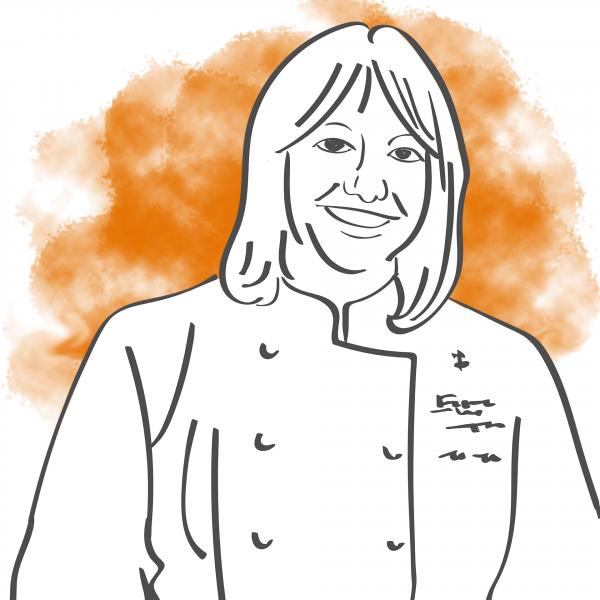 Gale Gand – Milwaukee North
Gale Gand – Milwaukee North
Gale Gand's work in the kitchen has earned her popularity on a national stage, both in TV and in restaurants. A native of north Chicagoland, Gand earned her acclaim at the Michelin Star rated Streeterville restaurant, Tru, of which she was a founding pastry chef and partner. She has published eight cookbooks, owns her own root beer brand, and served as the Chef in Residence in 2011 and 2012 at Elawa Farm in Lake Forest. Gand also hosted the series “Sweet Dreams” on the Food Network and served as a celebrity judge on several other programs. She continues to teach classes for both adults and children across the country. Her desserts were featured at the 2008 Beijing Olympics in the USA House and were chosen by Mayor Daley for the welcome dinner for China’s President Hu in 2011. She has also worked with Michelle Obama in her Chefs Move to Schools initiative to help teach children about nutrition and healthy eating. Gand currently lives in Riverwoods with her family.
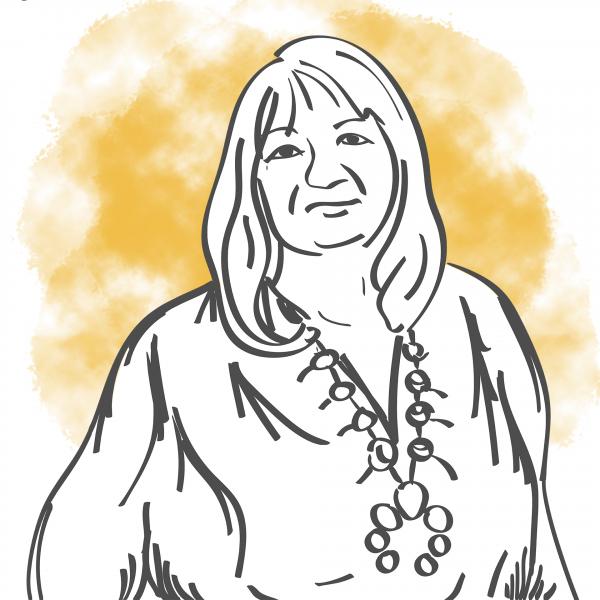 Sandra Cisneros Line – Milwaukee West
Sandra Cisneros Line – Milwaukee West
Sandra Cisneros is best known for her novel, The House on Mango Street, based on her experiences as a young Latina woman coming of age in the Humboldt Park neighborhood of Chicago. Growing up, Cisneros felt as if she was a person without a home, and this sense of displacement carried into her works as a poet, author and artist. She founded the Macondo Foundation and the Alfred Cisneros del Moral Foundation, non-profits which help foster the careers of aspiring writers. She was awarded the MacArthur Foundation Fellowship in 1995 and helped organize the Latino MacArthur Fellows. Cisneros has won numerous awards and honors, including two National Endowment for the Arts literature fellowships, honorary doctorates from State University of New York and Loyola University, and honorary degrees from DePaul University and University of North Carolina at Chapel Hill. She was recognized as one of the Frederic Douglass 200 in 2019. She currently lives in San Miguel de Allende, Mexico.
 Christine Magnuson Line – SouthWest Service
Christine Magnuson Line – SouthWest Service
Christine Magnuson is a two-time Olympic medalist in swimming. Born in Palos Heights, Magnuson was a six-time All-American in high school and maintains five individual school records at Victor J. Andrew High School in Tinley Park. After high school, Magnuson attended the University of Tennessee, where she won seven All-American certificates and became a school-record holder in the 200-yard free and the 100-yard fly. She won the gold medal at the SEC Championships in the 100-yard butterfly, breaking her own school record set earlier that same day. Magnuson went on to win two silver medals at the 2008 Beijing Olympics, one in the 100-meter butterfly and the other in the 4x100-meter medley relay.
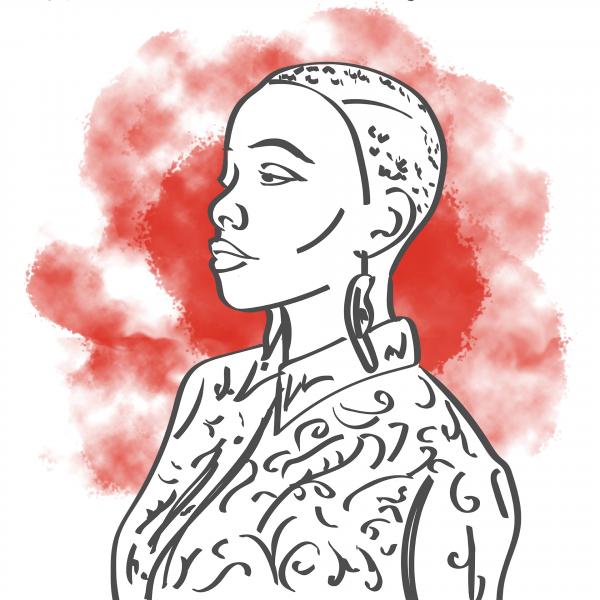 Jamila Woods Line – Rock Island, Main Line
Jamila Woods Line – Rock Island, Main Line
Jamila Woods is a Chicago-based musical artist and poet whose works explore Afrofuturism, Black identity and self-love. Her debut album, Heavn, won her critical acclaim and features collaborations with Chance the Rapper, Noname, Saba, Donnie Trumpet and more. Woods grew up in Beverly, the first black family on their block at the time. In interviews, Woods describes the feeling of isolation and not fitting in when she was young. Late in high school, Woods discovered poetry and found a sense of community. She studied Africana studies and theater at Brown University and joined an a cappella group. In 2015, Woods won the Ruth Lilly and Dorothy Sargent Rosenberg Poetry Fellowship, which enabled her to build her music career. Woods has worked with Young Chicago Authors, a non-profit that helps uplift youth voices through arts education and mentorship, and extended a contest to Chicago Public Schools students to film the music video for the song “LSD.”
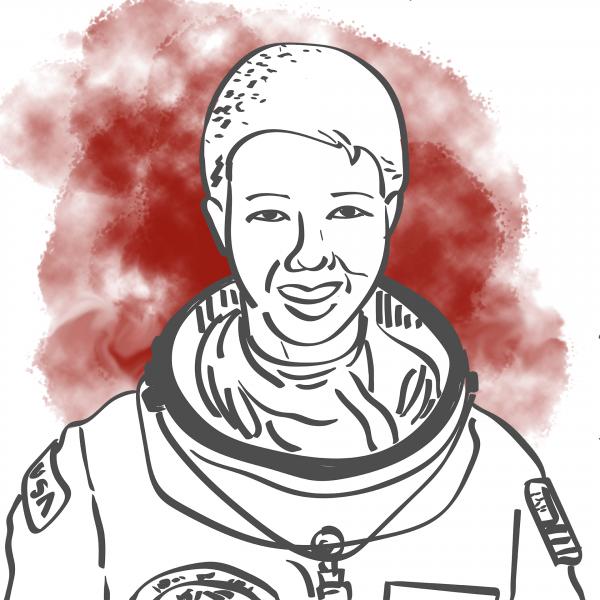 Mae Jemison Line – Rock Island, Beverly Branch
Mae Jemison Line – Rock Island, Beverly Branch
Mae Jemison made her mark in American history in 1992 by becoming the first African American woman in space on the space shuttle Endeavor. Born in Alabama, Jemison’s family moved to the Morgan Park neighborhood in Chicago when she was three years old. Her family encouraged and supported Jemison’s passion for science, which led her to Stanford University. She earned a bachelor of science in chemical engineering and a bachelor of arts in African American studies. She then earned a doctorate in medicine from Cornell University. Jemison served more than two years in the Peace Corps and became a general practitioner upon her return to the United States. However, inspired by Sally Ride, Jemison pursued her childhood dream and applied to become a NASA astronaut. In 1987, she became the first female African American astronaut. Jemison left NASA in 1993 and started the Jemison Group, an organization that encourages the development of technology that can address socio-economic issues around the world. She is leading the 100 Year Starship initiative, an effort to facilitate human travel beyond our solar system within the next 100 years. She is the author of several books and a recipient of several awards and honors.
 Felice Herrig Line – North Central Service
Felice Herrig Line – North Central Service
Felice “Lil’ Bulldog” Herrig is the ninth-ranked female Strawweight MMA fighter in the world who got her start in Muay Thai and kickboxing. Herrig was born in Buffalo Grove and made her debut on the national stage by appearing on the Fight Girls series on Oxygen Channel in 2007 and winning her fight against a champion Thai fighter. Her first MMA appearance occurred in 2009 in which she faced Iman Achhal at UWC: Man “O” War, losing in a split decision. As a kickboxer, Herrig won several International Kickboxing Federation titles and championships between 2006-2008. In 2013, Herrig signed with the UFC and competed in the 20th season of The Ultimate Fighter. Herrig continued to fight at UFC through 2018, but was pulled from her match in 2019 due to an ACL injury.
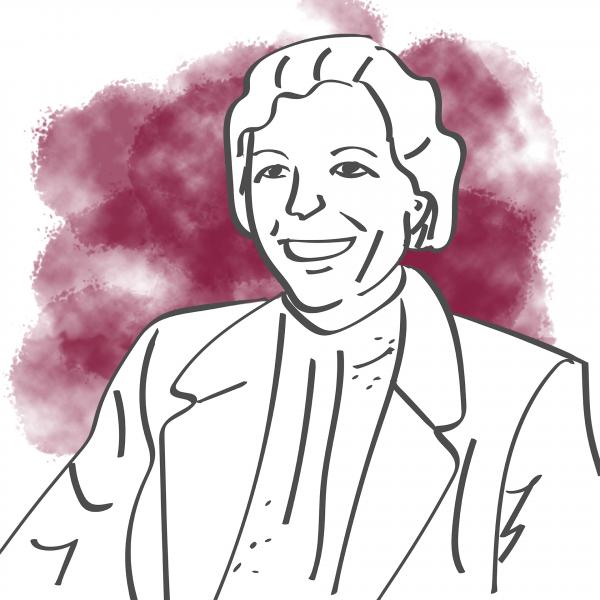 Ann Bannon Line – Heritage Corridor
Ann Bannon Line – Heritage Corridor
Ann Weldy, known by her pen name Ann Bannon, is an author of Lesbian pulp fiction known as “The Beebo Brinker Chronicles” which were published in the 1950s and 1960s. Bannon was born in Joliet, but grew up in Hinsdale. She found the inspiration for her writings after picking up a drug store paperback novel called Spring Fire by Vin Packer, a story of two sorority sisters who have an affair. Bannon started writing her own lesbian narratives and, with the help of Packer, found an editor to publish her works. The books found their way to kiosks in train stations, newsstands and pharmacies, and quickly gained a passionate audience of women who found validation for their lives and in their sexuality in the midst of a repressive era. However, Bannon remained largely unknown as a writer, so she returned to school for her master’s degree and found her way to working at universities as a professor and in deans' offices. Her books would become rediscovered and republished over the years, eventually resulting in “The Beebo Brinker Chronicles” being reimagined as a stage play in 2004. Her works continue to be some of the most popular original lesbian pulp fiction books read and taught in the country.